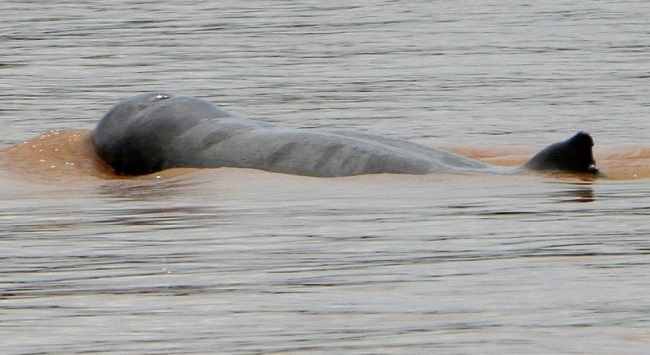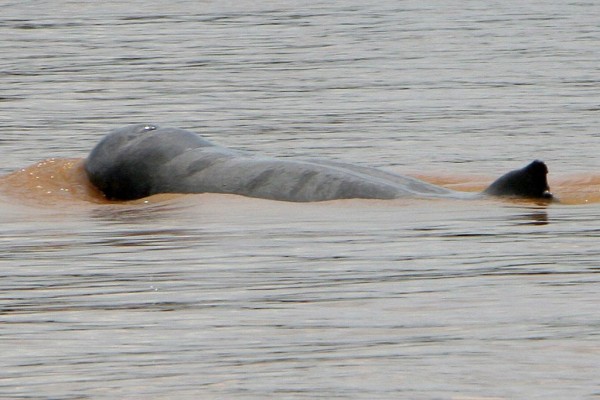
On February 22, the last known freshwater dolphin, often known as the Irrawaddy or Mekong River dolphin since it lives in both rivers in southern Laos, perished. The loss of animals, according to environmentalists, indicates that Southeast Asia’s greatest river is in bad shape.
The dolphin was discovered dead on a riverbed in Stung Treng province, close the Laos border, according to Cambodia’s Fisheries Conservation Department.

This photo taken on September 13, 2007 shows a freshwater dolphin swimming in the Mekong river in Kratie province, some 300 kilometers northeast of Phnom Penh.
The Death of the Last Mekong River Dolphin
The Mekong River dolphin is a severely endangered species that died after becoming entangled in a fishing net. It was severely damaged, preventing it from swimming, and it perished as a result. Pollution, according to the Cambodian Fisheries Administration and other environmentalists, was one of the causes of the dolphin’s death.
Its demise, according to the World Wide Fund for Nature (WWF), signifies a national-level extinction of freshwater dolphins in Laos. The dolphin was a 25-year-old male who reached 8.5 feet (2.6 meters) in length and weighed 242.5 pounds, according to the WWF (110 kilograms). According to UCA News, the dolphin was observed struggling in a net before its carcass washed up on a beach days later.
The deceased dolphin is the last freshwater dolphin in the region, according to a villager in Laos, and there will most likely be no more dolphins in the nation because these animals no longer have food sources in the river, and the environment has already been decimated. There were three known specimens in the Mekong River last year. The other two, on the other hand, had already passed away.
The dolphins’ deaths were blamed on fishing habits in the river by villagers. When the dolphins can’t locate food in the region, they typically migrate into neighboring territory near locations where humans fish or use explosives, according to one local.
Dolphins in the Mekong River are in decline.
The Mekong River dolphin has been red-listed as an endangered species by the International Union for Conservation of Nature (IUCN), since its number continues to dwindle year after year.
Freshwater dolphins in Myanmar’s Irrawaddy River and Cambodia’s Mekong River, where there are roughly 89 of them in 2020, are still reasonably stable, according to environmentalists. However, Cambodian rivers continue to be affected by climate change, which might have a negative impact on their population and cause it to drop over time.
The first group of Irrawaddy dolphins arrived in Cambodia in 1997, with an estimated population of roughly 200, according to the Associated Press (AP). However, in recent decades, it has plummeted to the point that the remnant population is now regarded “critically endangered.” Despite certain difficulties, they remain rather stable.
The death of the only known freshwater dolphin in Southeast Asia’s greatest river illustrates how fragile these aquatic creatures are, as well as the other species that survive. Climate change, according to experts, is a key factor contributing to the risk of population reduction among many species in the area.
